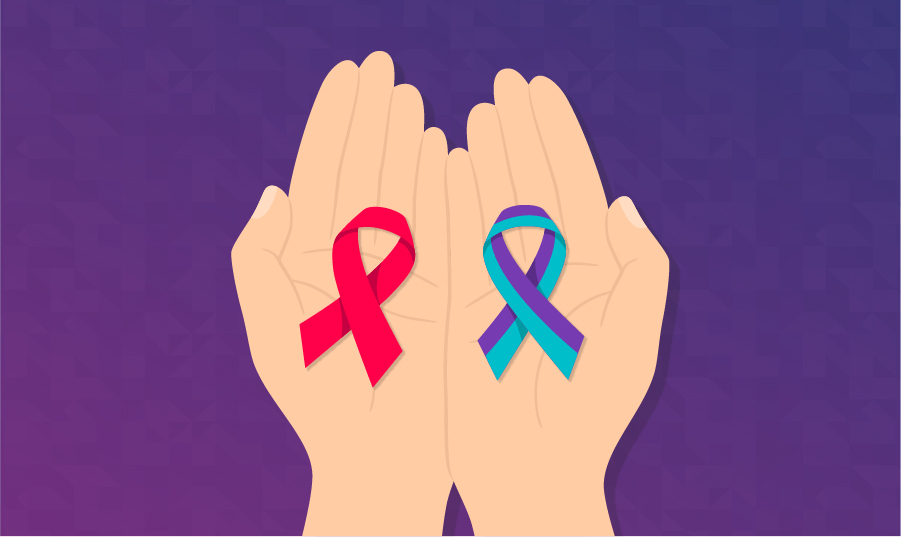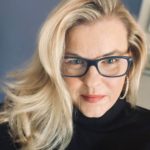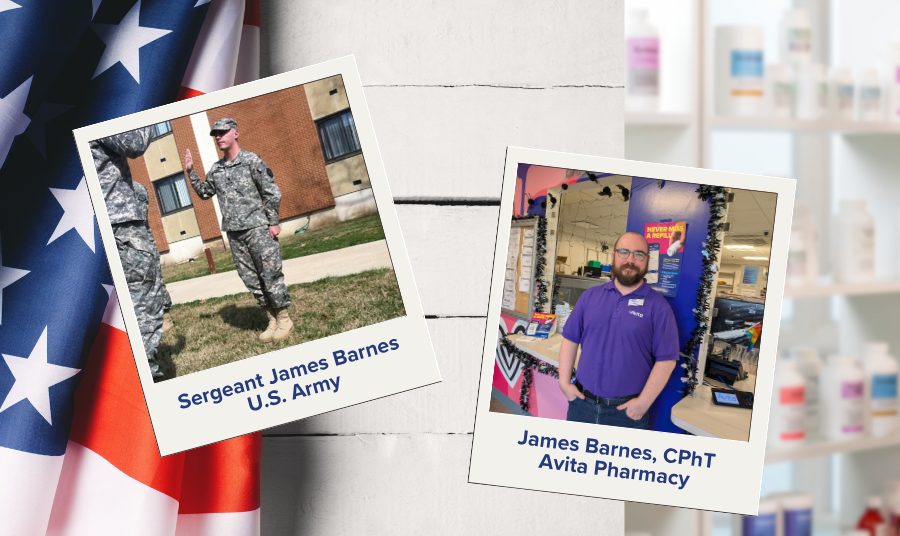This article contains content related to suicide. We understand that discussing these subjects can be triggering, so please proceed with caution and prioritize your personal wellness. If you or someone you know is struggling with mental health issues, we encourage you to seek support from a behavioral health professional or trusted individual.
Facing social stigma, public and medical discrimination, and other psychological, economic, and health-related challenges, people living with HIV are up to five times more likely to die by suicide than those outside of this demographic. Community health organizations are stepping up to this heartbreaking dilemma by innovating integrated behavioral health and HIV treatment programs that coordinate targeted services to serve clients’ mental and physical health holistically.
At the forefront of this movement is New York’s GMHC. Founded in 1982 as the world’s first HIV/AIDS service organization, the Avita covered entity partner now offers a multifaceted menu of services addressing the social determinants of health that fuel HIV infection rates and prevent people from accessing equitable care. “It’s all about getting clients everything they need,” says Chet Balram, GMHC’s managing director of mental health and substance use services. “Not only in one place, but in a place where they feel supported and free of stigma, a place they want to be.”
Read on to learn how the GMHC team is developing a world-class care model that saves lives by compassionately meeting people where they are and guiding them toward a brighter future.
It's all about getting clients everything they need. Not only in one place, but in a place where they feel supported and free of stigma, a place they want to be.
Chet Balram, LCSW
Managing Director, Mental Health and Substance Use Services
GMHC
AVITA: Studies differ on the increased risk of suicide for people living with HIV. An article from The Lancet HIV cites a meta-analysis that showed people living with HIV are 100 times more likely to die by suicide than the general population. Aidsmap referred to a report that said the increase is two to eight times higher. The bottom line is that any escalation is too much. So we can better understand the scope of the issue, what type of stats are you seeing at GMHC?
CHET: Given the context of GMHC’s client base—we primarily serve a diverse population in New York, including the LGBTQ+ community, people of color, and those with substance use histories—an accurate estimate might be that people living with HIV are two to five times more likely to commit suicide compared to the general population.
This estimate aligns with research from urban areas with comprehensive healthcare services like ours, but where stigma is still an issue and social determinants of health are still significantly impacting the population.
Many individuals face complex health challenges that go beyond HIV itself.
Chet Balram, LCSW
Managing Director, Mental Health and Substance Use Services
GMHC
AVITA: What factors play into a higher rate of suicide and suicidal ideation for people living with HIV?
CHET: The higher rate of suicide and suicidal ideations among people living with HIV is driven by a complex interplay of psychological, social, economic, and health-related factors. For example, individuals who are living with HIV often face significant stigma and discrimination, which can lead to social isolation, shame, and internalized negative self-perception. In a healthcare setting, we’ve learned that many of our clients have tried to access services but, prior to coming to GMHC, found that provider stigma around their positive status impacted their care. As a result, those individuals were not likely to continue.
A preexisting mental health disorder can also impact a client’s likelihood of seeking help. For example, if someone has untreated depression, the likelihood of them engaging in supportive services for HIV decreases. Substance use can also be an issue.
The higher rate of suicide and suicidal ideations among people living with HIV is driven by a complex interplay of psychological, social, economic, and health-related factors. Individuals who are living with HIV often face significant stigma and discrimination, which can lead to social isolation, shame, and internalized negative self-perception.
Chet Balram, LCSW
Managing Director, Mental Health and Substance Use Services
GMHC
AVITA: Data shows that there’s a higher rate of suicidal vulnerability during the first 12 months after people test positive for HIV. Are you seeing that trend at GMHC?
CHET: The first year following an HIV diagnosis can be an especially difficult time for clients. There’s a lot of shock, stigma, and fear of living with a chronic and potentially life-threatening illness, and that can lead to severe emotional distress and make individuals more susceptible to depression, anxiety, and suicidal thoughts.
Something else that comes into play is a sense of loss. Individuals are going through a grieving process, and those different stages of grief can have a huge impact on how they manage their HIV diagnosis.
Part of the solution is connecting clients with the resources they need immediately after testing positive through an integrated healthcare model that includes mental health support and social services aimed at reducing stigma and improving quality of life.
Individuals are going through a grieving process, and those different stages of grief can have a huge impact on how they manage their HIV diagnosis.
Chet Balram, LCSW
Managing Director, Mental Health and Substance Use Services
GMHC
AVITA: Tell me more about the integrated mental health care and HIV treatment model.
CHET: Integrated care is a coordinated approach to healthcare that brings together various services and providers to address multiple aspects of a person’s health cohesively. Think of it as a one-stop-shop approach to care that is advantageous to an individual living with HIV and, therefore, increases the likelihood of their engagement in services. Important elements include access to trauma-informed care and providers that offer a client-centered, culturally competent, and non-judgmental approach.
Many individuals face complex health challenges that go beyond HIV itself. Sometimes people think, “Well, someone’s HIV positive. That’s all we need to treat.” No, there are a lot of other issues, including mental health, substance use disorder, and social determinants like housing instability, nutritional needs, and unemployment or underemployment. Sometimes, those issues are the most important ones for a client. If you don’t have a place to rest your head, why are you going to make getting your HIV medications a priority? Integrated service providers look at the different factors at play and work to ensure that an individual receives everything they need, hopefully in one place where they feel comfortable.
Integrated care is a coordinated approach to healthcare that brings together various services and providers to address multiple aspects of a person's health cohesively. Think of it as a one-stop-shop approach to care that is advantageous to an individual living with HIV and, therefore, increases the likelihood of their engagement in services.
Chet Balram, LCSW
Managing Director, Mental Health and Substance Use Services
GMHC
AVITA: How does this integrated model play out for GMHC clients?
CHET: At GMHC, it all starts with our intake process. Say “Joe” is coming in for intake. He is screened by our intake specialist and then given the option of referrals to different programs that meet his needs, like housing, nutrition, mental health, substance use, or workforce development.
We offer so many different services at GMHC. It’s all about getting clients everything they need. Not only in one place, but in a place where they feel supported and free of stigma, a place they want to be.
In Joe’s case, we’re also educating him about the care available. We want to make sure he understands what he’s signing up for and how these services will help him move forward in a healthy way. As a result of receiving integrated care in a non-stigmatized environment, there’s a higher likelihood that Joe will also want to engage in medical treatment, which means he’s treating his HIV diagnosis.
I want everyone who walks through GMHC’s doors to be able to access the services they need.
Chet Balram, LCSW
Managing Director, Mental Health and Substance Use Services
GMHC
AVITA: How do GMHC providers within different departments work together to ensure a client receives seamless care?
CHET: It’s a collaborative effort and a learning process. We have team meetings where we discuss each client’s concerns. In the case of our fictional client Joe, his providers will work together to ensure he is receiving quality care. We’re not just letting Joe slide by. We’re engaged in the process, aligning on interventions to address Joe’s needs.
It’s a collaborative effort and a learning process. We have team meetings where we discuss each client’s concerns.
Chet Balram, LCSW
Managing Director, Mental Health and Substance Use Services
GMHC
AVITA: What type of growth has GMHC seen in terms of serving people living with HIV who are also experiencing mental health and substance use challenges?
CHET: GMHC was founded in 1982 during the AIDS crisis. Initially, it was just, “How do we tackle this thing we’re seeing?” Then, as people started to live with HIV, we had to evolve. It wasn’t until the late 80s and early 90s that we started looking at the psychological toll of HIV on clients and the importance of addressing mental health as part of comprehensive HIV care.
Over the past three years alone, we’ve gone from a staff of 7 to a team of 30 in our Mental Health and Substance Use department. We’ve recently received a SAMHSA grant for $500,000 over five years, enabling us to provide all clients seeking substance use services with access to counseling and our psychiatric team for medication-assisted treatment (MAT). That’s part of my vision: I want everyone who walks through GMHC’s doors to be able to access the services they need.
In 2023 alone, we served 5,558 clients at GMHC, and 350 of them received mental health and substance use services. There’s a reason people come to GMHC. It’s a place where they feel safe without worrying about stigma, discrimination, and hate; a place where people feel comfortable knowing that our clinicians are trained to provide not just quality care but also trauma-informed care. Our staff goes above and beyond to ensure they know as much about every client as possible. And that’s why our clients don’t leave.
There's a reason people come to GMHC. It's a place where they feel safe without worrying about stigma, discrimination, and hate; a place where people feel comfortable knowing that our clinicians are trained to provide not just quality care but also trauma-informed care. Our staff goes above and beyond to ensure they know as much about every client as possible. And that's why our clients don't leave.
Chet Balram, LCSW
Managing Director, Mental Health and Substance Use Services
GMHC

ABOUT CHET BALRAM, LCSW
As Managing Director of Mental Health and Substance Use Services at GMHC, Chet provides clinical oversight for all programs and is dedicated to advancing GMHC’s mission by expanding access to mental health and substance use services for all who seek them.
Chet brings over 12 years of experience working with nonprofit organizations that support vulnerable populations, including those facing homelessness, HIV/AIDS, substance use issues, and mental health challenges. As a highly creative clinician, he is committed to upholding high standards of practice, assessing the effectiveness of client care, and implementing improvements to ensure exceptional service. Chet is skilled in building and leading high-performing teams and fostering constructive relationships with a broad range of community partners.
A Hunter College MSW graduate, Chet began his career as a housing case manager at Harlem United. He has since held various roles, including director of operations and clinical director, within nonprofit organizations throughout New York City. Since joining GMHC in 2021, he has been proud to contribute to an organization at the forefront of the equity movement, particularly as a gay person of color.

ABOUT GMHC
Since 1982, GMHC has been working to end the AIDS epidemic in New York City and nationwide. As the world’s first HIV/AIDS service organization, the organization addresses the social determinants of health—including food and housing insecurity, unemployment, and lack of access to health services—that continue to fuel HIV infection rates and prevent people from accessing care and treatment. Its prevention, care, and advocacy programs have made substantial contributions to reducing new HIV infections and ensuring people diagnosed with HIV/AIDS are connected to care and treatment.




